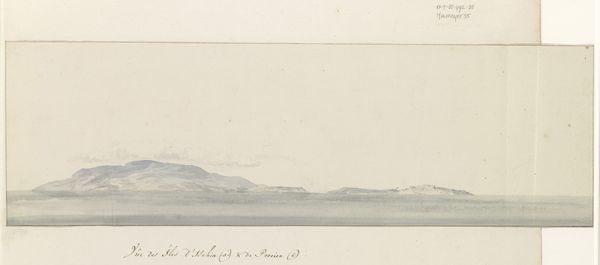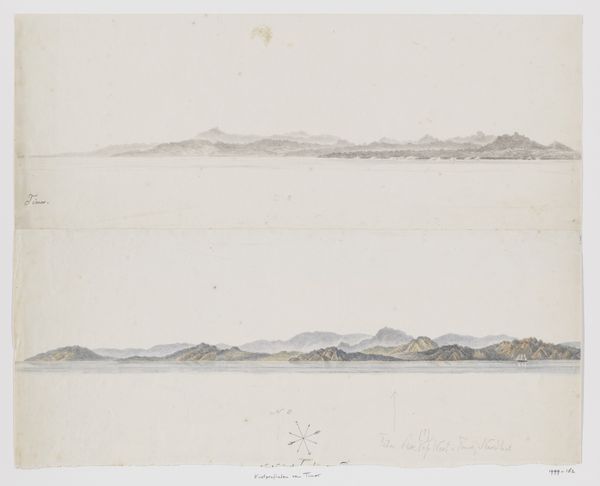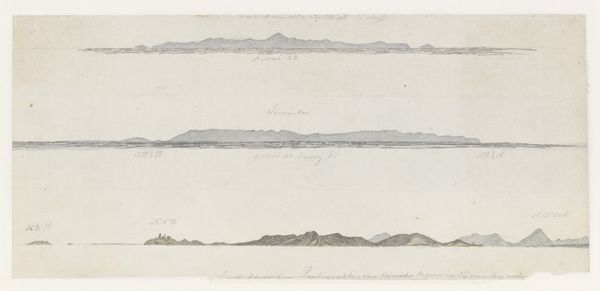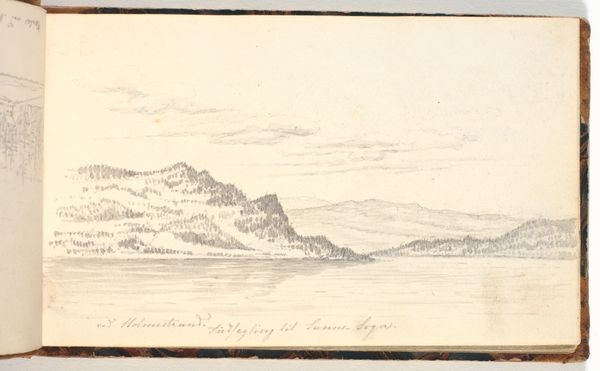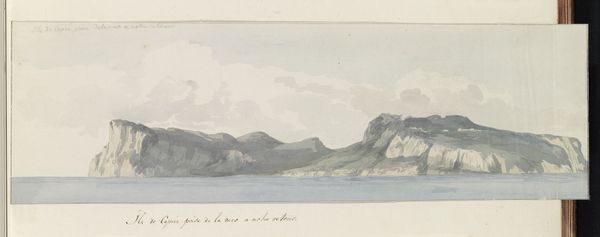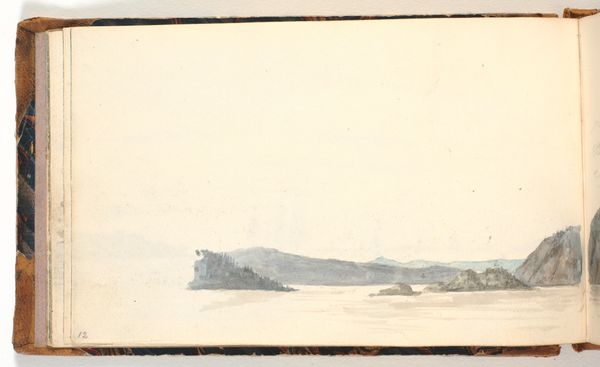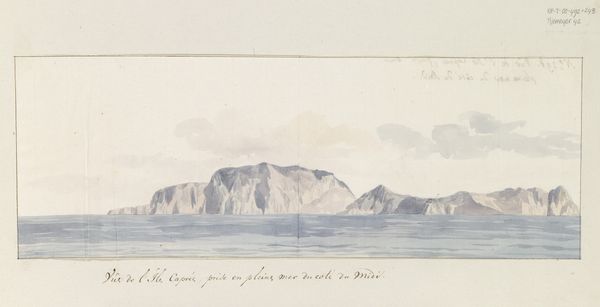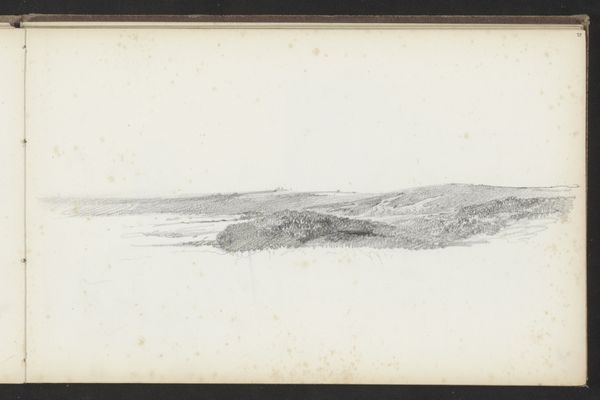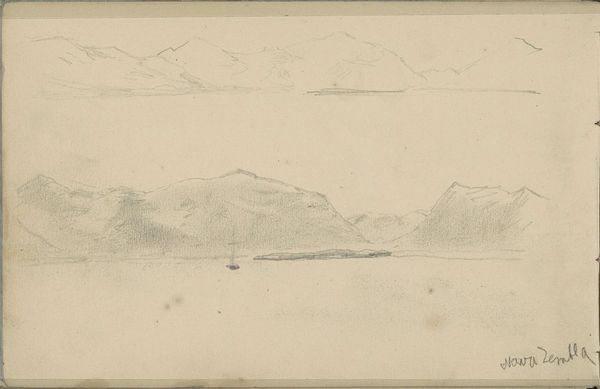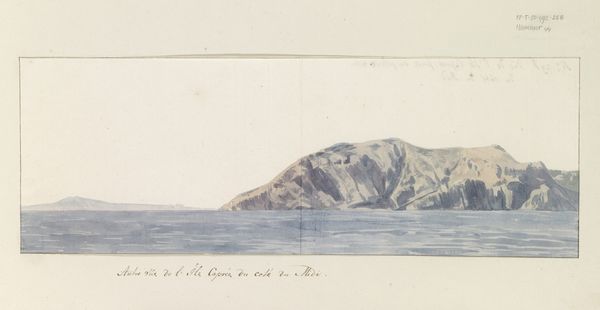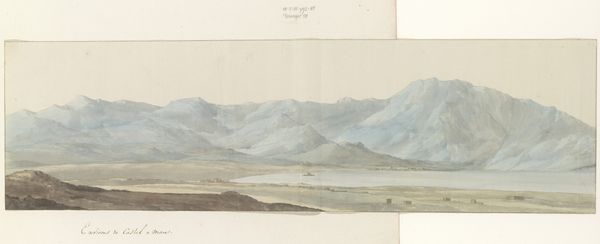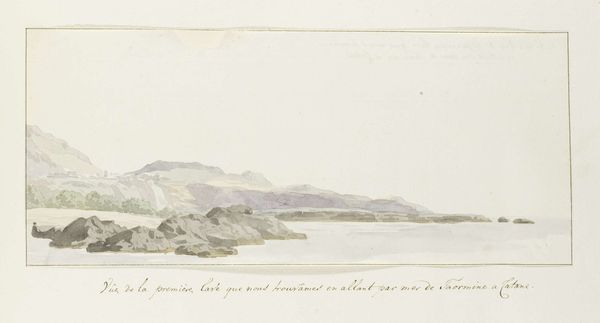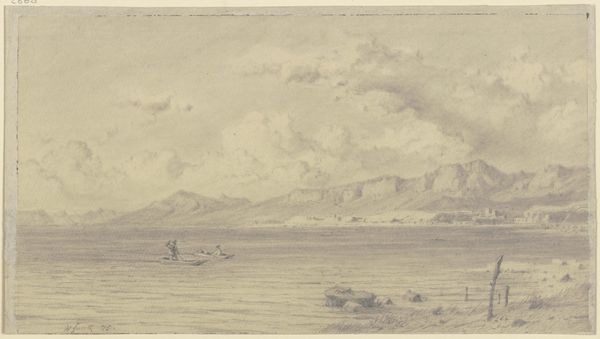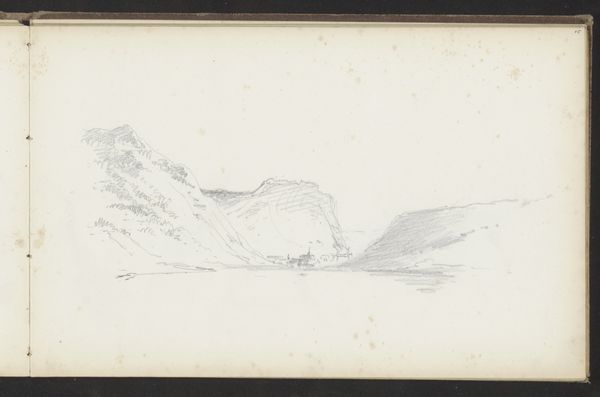
Gezicht op Golf van Napels vanaf kade bij kerk Santa Maria del Carmine 1778
0:00
0:00
Dimensions: height 220 mm, width 372 mm
Copyright: Rijks Museum: Open Domain
This view of the Gulf of Naples was made by Louis Ducros using watercolor and graphite. As you can see, Ducros has made a virtue of watercolor’s inherent qualities: its transparency, its liquidity, the way it can evoke atmosphere with subtle gradations of tone. Interestingly, the application of watercolor became an industry around this time, with standardized paints available for purchase, and a robust market for scenic views like this one. It was one of the most effective ways to memorialize a place. In this respect, Ducros wasn't so different from a ceramicist producing Wedgwood ware or a silversmith making luxury goods for export: he had to work within established conventions of taste, and cater to the demands of wealthy consumers. So, appreciating this unassuming image requires us to move beyond seeing it as a simple transcription of nature, and understanding the economic imperatives behind it. We have to look at the artist and the networks of production that enabled him to make such a picture, as well as the networks of exchange through which it circulated.
Comments
No comments
Be the first to comment and join the conversation on the ultimate creative platform.
